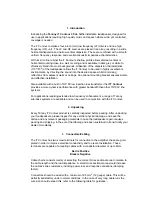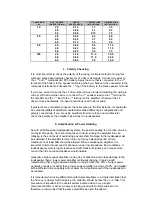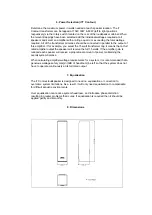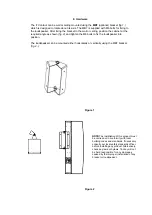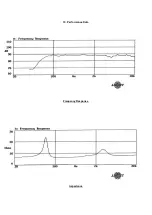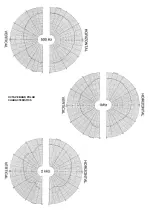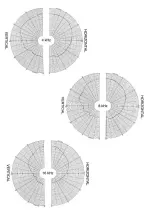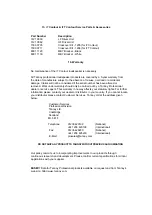
12. Troubleshooting Guide
Symptom
Possible Cause
Action
No Output From Speakers
Broken Speaker Cables(s)
Amplifier
Check the electrical continuity of
the loudspeaker cables, and
replace if necessary.
Check the gain controls on the
amplifier are turned up.
Be sure the amplifier is receiving
an input signal (check the
“signal” indicators on the amp).
Connect the loudspeaker cable
which has no output to another
amplifier channel you know is
working, make sure signal is fed
to the new amplifier channel. If
output is obtained from the
loudspeakers(s) then the
problem is with the amplifier
channel or input signal leads. If
this is not the case then the fault
may lie in the cabling or the
loudspeaker.
Intermittent Output
Poor Connection
Check the loudspeaker cabling
has a good electrical connection
with amplifier outputs and
loudspeaker inputs. A bad
connection can increase
resistance which will
substantially reduce the output,
or make “cracking” noises which
are unrelated to signal content
If using multi-strand loudspeaker
cable, be sure no strands of
cable are causing short circuits
between the positive and
negative terminals of the
amplifier outputs and/or
loudspeaker inputs.
Poor Low Frequency
Output
“Out of phase” connection
When two speakers are
connected “out of phase”, the
low frequencies will virtually be
cancelled out. Check the
connections at the
amplifier/speaker paying
attention to polarity. (See section
4).
Irregular sounds such as
buzzing and humming
emanating from the
loudspeaker
Poor system grounding
Faulty electronic device in
the signal chain
Check and correct system
grounding.
The speaker cannot generate
these sounds on its own. It is
most likely there is a fault with a
piece of electronic equipment in
the signal path.



